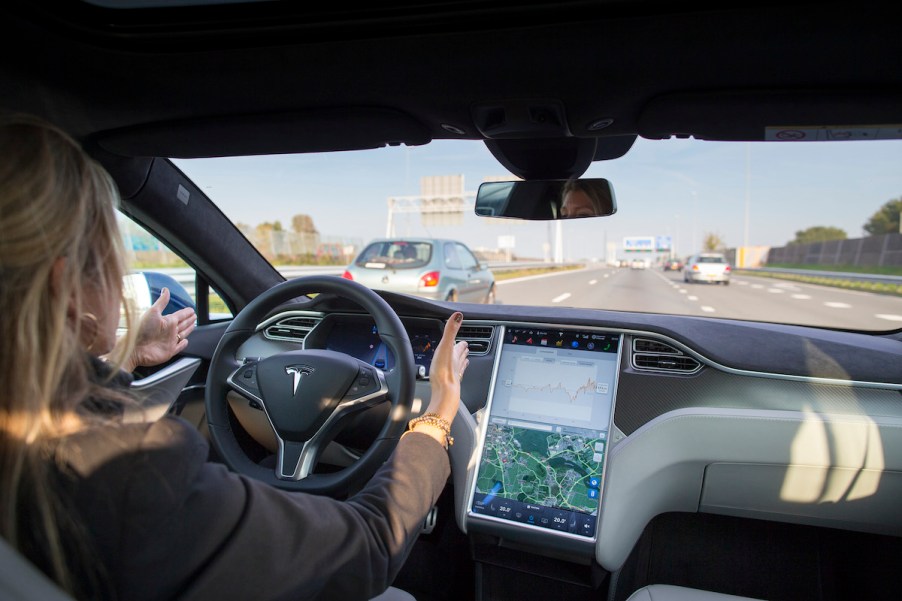
The 4 Automakers With the Best Lane-Keeping Assist (LKA) Safety Systems
Car safety technology has improved drastically over the past few decades. Beyond airbags and seatbelts, advanced car safety systems (ACSS) help detect and prevent collisions. But not all automakers offer the same ACSS features, and some are more effective than others. For instance, some brands have a much better better lane-keeping assist (LKA) system, while others lag far behind. Our top four lane-keeping assist systems come from:
- Genesis
- Tesla
- Kia
- Cadillac
What does lane-keeping assist do?
LKA adjusts the steering wheel when it senses the vehicle has moved outside its appropriate lane. An effective LKA system also sends a tactile or audible warning before the adjustment. The best systems give you the option to adjust the sensitivity of the wheel maneuvers as needed.
You can get a quick rundown of what lane-keep assist is in the video below.
Note that LKA isn’t a foolproof safety system. The cameras used to operate the feature won’t be able to see the road lines correctly if there’s a glare from the sun. LKA also occasionally tries to swerve into places where you’re not authorized to drive.
The automakers with the best lane-keeping assist systems

Consumer Reports, says many drivers are satisfied with the Genesis LKA system. It includes lane departure warning (LDW), which sends an audible alert when the vehicle drives outside the lines. On models like the GV80, LKA pairs with adaptive cruise control (ACC).
ACC automatically adjusts braking and acceleration while driving, provided you keep your hands on the wheel. Genesis also has available navigation-based ACC, which activates the system in construction zones and similar areas. If you prefer, you can also use all three functions independently. See the GV80 in action in this next video:
Consumer Reports data also reveals most drivers like Tesla’s Lane Assist. It can make adjustments beginning at around 30 mph and up to about 87 mph. The steering wheel vibrates if the EV moves beyond a marking, and a warning light will appear on the dashboard.
Lane Assist can also work in tandem with Tesla’s adaptive cruise control. It requires you to keep your hands on the steering wheel while both functions are activated. If you fail to do that, ACC or Lane Assist will slow the vehicle.
Kia cars come with LKA and LDW as separate features. Some models also have Lane Following Assist, which uses a camera to keep the vehicle in the center of a lane.
Cadillac’s LKA system also includes LDW. On most vehicles, the features will activate if you’re driving at least 37 mph. Cadillac says LKA won’t start while you’re using a turn signal or steering manually. General Motors’ Blue Cruise is leading Detroit in the driver assistance department. It even offers the only truck with hands-free towing.
What are some other advanced car safety systems?
Cars with ACSS usually have several essential crash mitigation features, including automatic emergency braking (AEB). AEB activates the brakes for you, reducing the impact of a potential collision. This function might also include collision detection for instances when the car is in reverse.
Automakers often pair AEB with forward collision warning (FCW), which triggers an alert before impact. Rear cross-traffic warning (RCTW) tells you when a car is approaching from the rear or either side of the vehicle. It works only when your vehicle is in reverse, so a visual warning usually appears on the backup camera screen, along with an audible alert.
The point of ACSS is to provide drivers with as much protection as possible to avoid or mitigate a collision. It can also make the driving experience easier for older drivers and teens still getting a feel for the road.
Next, learn the difference between lane-keep assist and lane centering or see several lane-keeping assist systems put to the test in this final video:






